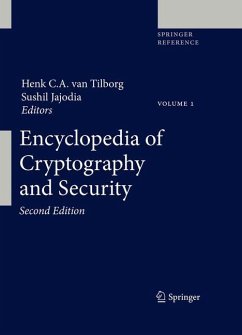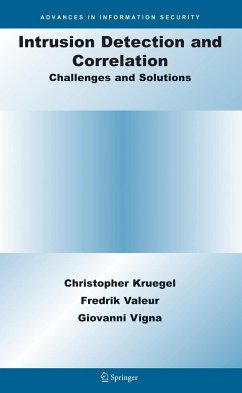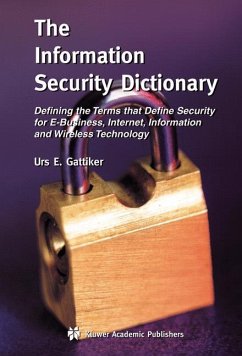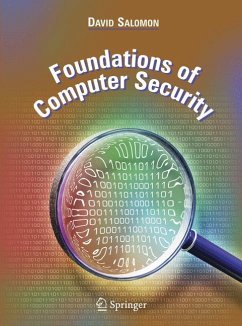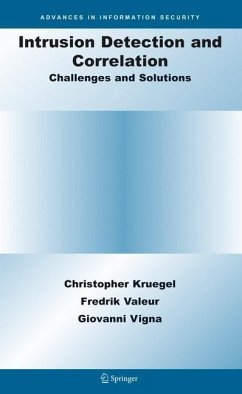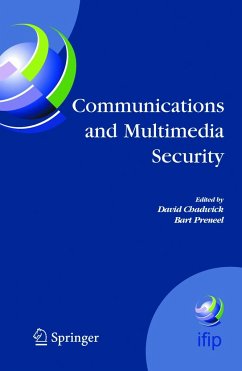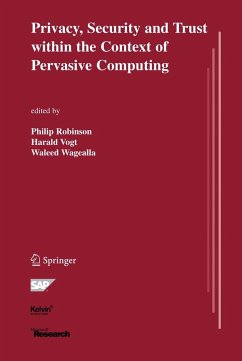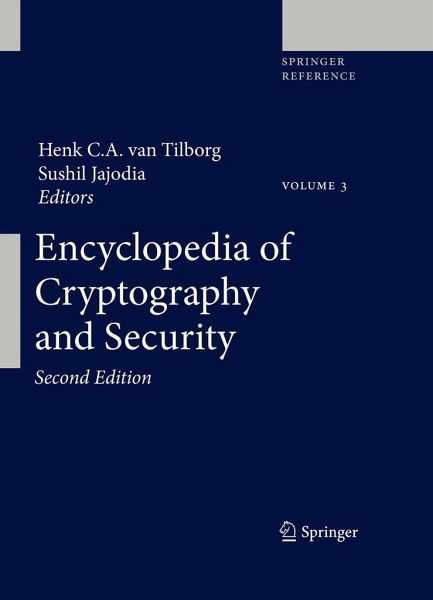
Encyclopedia of Cryptography and Security
Versandkostenfrei!
Nicht lieferbar
Expanded into two volumes, the Second Edition of Springer's Encyclopedia of Cryptography and Security brings the latest and most comprehensive coverage of the topic:
Definitive information on cryptography and information security from highly regarded researchers Effective tool for professionals in many fields and researchers of all levels Extensive resource with more than 700 contributions in Second Edition 5643 references, more than twice the number of references that appear in the First Edition With over 300 new entries, appearing in an A-Z format, the Encyclopedia of Cryptography and Security provides easy, intuitive access to information on all aspects of cryptography and security. As a critical enhancement to the First Edition's base of 464 entries, the information in the Encyclopedia is relevant for researchers and professionals alike. Topics for this comprehensive reference were elected, written, and peer-reviewed by a pool of distinguished researchers in the field. The Second Edition's editorial board now includes 34 scholars, which was expanded from 18 members in the First Edition. Representing the work of researchers from over 30 countries, the Encyclopedia is broad in scope, covering everything from authentication and identification to quantum cryptography and web security. The text's practical style is instructional, yet fosters investigation. Each area presents concepts, designs, and specific implementations. The highly-structured essays in this work include synonyms, a definition and discussion of the topic, bibliographies, and links to related literature. Extensive cross-references to other entries within the Encyclopedia support efficient, user-friendly searches for immediate access to relevant information. Key concepts presented in the Encyclopedia of Cryptography and Security include: Authentication and identification; Block ciphers and stream ciphers; Computational issues; Copy protection; Cryptanalysis and security; Cryptographic protocols; Electronic payment and digital certificates; Elliptic curve cryptography; Factorization algorithms and primality tests; Hash functions and MACs; Historical systems; Identity-based cryptography; Implementation aspects for smart cards and standards; Key management; Multiparty computations like voting schemes; Public key cryptography; Quantum cryptography; Secret sharing schemes; Sequences; Web Security.
Topics covered: Data Structures, Cryptography and Information Theory; Data Encryption; Coding and Information Theory; Appl.Mathematics/Computational Methods of Engineering; Applications of Mathematics; Complexity.
This authoritative reference will be published in two formats: print and online. The online edition features hyperlinks to cross-references, in addition to significant research.
Definitive information on cryptography and information security from highly regarded researchers Effective tool for professionals in many fields and researchers of all levels Extensive resource with more than 700 contributions in Second Edition 5643 references, more than twice the number of references that appear in the First Edition With over 300 new entries, appearing in an A-Z format, the Encyclopedia of Cryptography and Security provides easy, intuitive access to information on all aspects of cryptography and security. As a critical enhancement to the First Edition's base of 464 entries, the information in the Encyclopedia is relevant for researchers and professionals alike. Topics for this comprehensive reference were elected, written, and peer-reviewed by a pool of distinguished researchers in the field. The Second Edition's editorial board now includes 34 scholars, which was expanded from 18 members in the First Edition. Representing the work of researchers from over 30 countries, the Encyclopedia is broad in scope, covering everything from authentication and identification to quantum cryptography and web security. The text's practical style is instructional, yet fosters investigation. Each area presents concepts, designs, and specific implementations. The highly-structured essays in this work include synonyms, a definition and discussion of the topic, bibliographies, and links to related literature. Extensive cross-references to other entries within the Encyclopedia support efficient, user-friendly searches for immediate access to relevant information. Key concepts presented in the Encyclopedia of Cryptography and Security include: Authentication and identification; Block ciphers and stream ciphers; Computational issues; Copy protection; Cryptanalysis and security; Cryptographic protocols; Electronic payment and digital certificates; Elliptic curve cryptography; Factorization algorithms and primality tests; Hash functions and MACs; Historical systems; Identity-based cryptography; Implementation aspects for smart cards and standards; Key management; Multiparty computations like voting schemes; Public key cryptography; Quantum cryptography; Secret sharing schemes; Sequences; Web Security.
Topics covered: Data Structures, Cryptography and Information Theory; Data Encryption; Coding and Information Theory; Appl.Mathematics/Computational Methods of Engineering; Applications of Mathematics; Complexity.
This authoritative reference will be published in two formats: print and online. The online edition features hyperlinks to cross-references, in addition to significant research.




